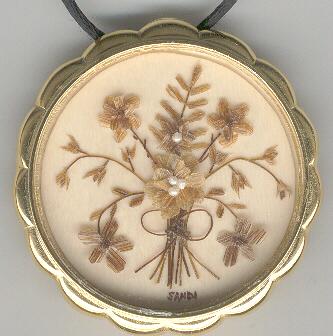A. Hair. "Prince of Wales" brooch
(diameter ~ 63 cm) fashioned by Sandra Johnson exemplifies the
appearance of pins featuring human hair; these brooches were
especially popular during Queen Victoria's reign.
(© photo courtesy Sandra Johnson, from htt://victorianhairjewelry.com/victorianhairart.html)
